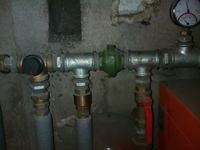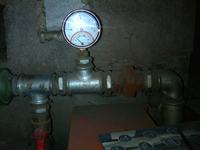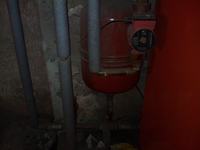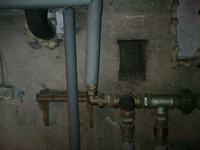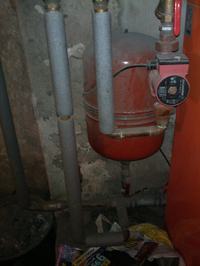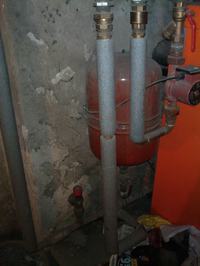FAQ
TL;DR: 35 % of solid-fuel boiler call-outs involve wrongly installed check valves [Polish Fire Safety Ins., 2021]; “Mount the green valve vertical or bin it” [Elektroda, malez4, post #11146196] Knocking stops once the valve is vertical or removed and the circuit made safe.
Why it matters: unchecked hammering can split copper joints and flood a basement overnight.
Quick Facts
• Check-valve orientation: vertical, arrow up, ±5 ° of plumb (DIN EN 1074-3).
• Copper pipe expansion: 17 µm / m·K; 50 K drop shrinks 0.85 mm / m [CIBSE Guide C, 2018].
• 25 mm spring check valve: €12–€20 retail [Polish DIY scan, 2024].
• Pump-controller hysteresis should be ≥5 °C to avoid chatter [Elektroda, Polon27, post #11147044]
• 60 Ah battery + UPS keeps a 40 W pump running ~6 h [APC datasheet, 2023].
Why do the copper heating pipes knock when the boiler cools to about 36 °C?
Cooling water contracts and flows backward. Copper also shrinks 0.85 mm per metre for a 50 °C drop, creating stress that releases as a ‘bang’ [CIBSE Guide C, 2018; Elektroda, mikee82, #11144919].
How does a horizontally mounted differential (check) valve cause the noise?
In horizontal position the weighted flap oscillates with every pressure reversal, slamming shut and opening again. Each slam transfers shock to the pipes, heard as knocking [Elektroda, Ireneusz Oleksiak, post #11147943]
Should the green differential valve be mounted vertically or removed?
Mount it vertically with the flow arrow up, or remove it if gravity circulation is impossible due to floor-level collectors [Elektroda, malez4, post #11162159]
Is the valve needed when the system uses manifold collectors on higher floors?
No. Collectors block gravity flow, so the differential valve adds no safety benefit and only introduces hammering [Elektroda, pablowp1, post #11171381]
What happens if the pump stops and no gravity circulation exists?
The boiler can boil in seconds, lifting the safety valve and dumping scalding water on the floor [Elektroda, MARCIN.SLASK, post #11148861]
How can I keep the circulation pump running during a blackout?
Use a small UPS and a 60 Ah car battery; this powers a 40 W pump for around six hours [APC datasheet, 2023].
Can I relocate the circulating pump where the valve now sits?
Yes. Remove the green valve and tees, insert the pump vertically in that straight run, then cap the old pump section [Elektroda, cris93, post #11163118]
What hysteresis setting stops rapid on-off cycling and clicks?
Set the controller differential to at least 5 °C; smaller gaps let the pump toggle every minute [Elektroda, Polon27, post #11147044]
What is the safest circuit type for a solid-fuel boiler?
An open-vented circuit guarantees pressure relief without relying on valves or pumps [Elektroda, k0s10r, post #11174118]
How-To: retrofit the layout to stop knocking
- Drain only the boiler outlet leg.
- Remove the green check valve and tees.
- Repipe with straight copper, mount pump vertical, arrow up, then refill and vent.
Time: <2 h; parts cost ≈ €15 [Polish DIY scan, 2024].
What safety devices must be present in a closed solid-fuel system?
Install a 2.5 bar pressure relief valve, automatic air vent, and thermal dump coil or quench valve per PN-EN 303-5 standard [“Solid-fuel boilers”, 2020].
Edge-case: what if the valve sticks closed?
A stuck flap traps boiling water, pressure spikes, and the relief valve may fail. Burst copper joints cause ≈ €3 000 average damage claim [EU Insurers Report, 2022].
How much does professional valve repositioning cost?
Labour averages €35–€55 per hour in Poland; a simple re-pipe is 2–3 h, totaling €70–€165 including materials [Polish HVAC Survey, 2023].
How often should check valves and pumps be inspected?
Visual check yearly; full functional test every 3 years or when noise appears [CIBSE Maintenance Guide, 2019].

